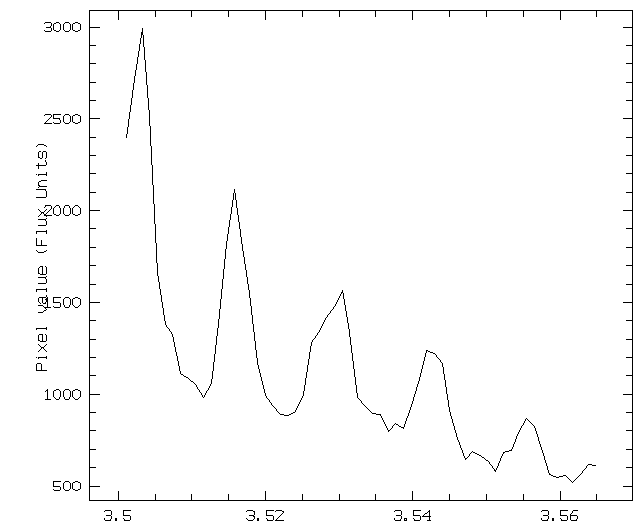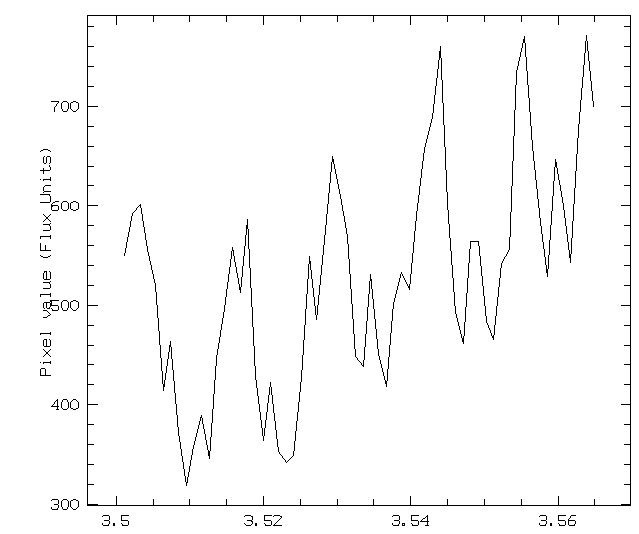


These two graphs show the infrared emission in the 3.50 - 3.56 micron spectral band, as observed from the plume over the area where fragment H impacted on Jupiter. This violent event took place on July 18, at about 19:32 UT. The spectra were obtained with the IRSPEC spectrograph attached to the Nasmyth focus to the ESO 3.5-metre New Technology Telescope. They were obtained simultaneously at 19:50 UT, or about 18 minutes after the impact, and less than 15 minutes after the bright plume became visible at the limb. The exposure time was 1 minute and the observers were Therese Encrenaz (Observatoire de Paris-Meudon, France), Rita Schulz adn Joachim A. Stuewe (Max-Planck-Institut fuer Astronomie, Katlenburg-Lindau, Germany) and Guenther Wiedemann (ESO).
The first spectrum shows the emission of methane (CH4) observed near the center of the H impact region. These S-emission bands are usually not observed in Jupiter, but are present in this spectrum because of the high temperature (T = 700 K) that is a result of the large amount of energy deposited by the violent impact.
The second spectrum shows the same band of methane in the same IRSPEC spectrum, but now as observed at the leading side of the H impact region. The change in the slope is due to a very high rotational temperature (several thousand degrees). Such a high temperature was not expected such a long time after the impact. Many new unidentified lines appear in the spectrum; some of them might be due to other bands of methane.
This is ESO PR Photo SL9J/94-17. It may be reproduced, if credit is given to the European Southern Observatory.